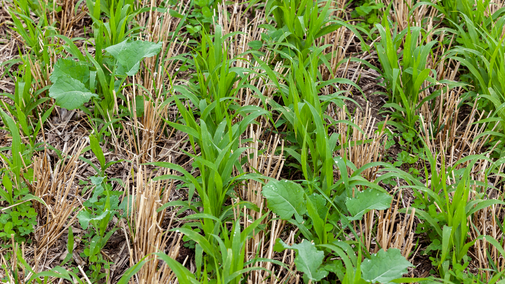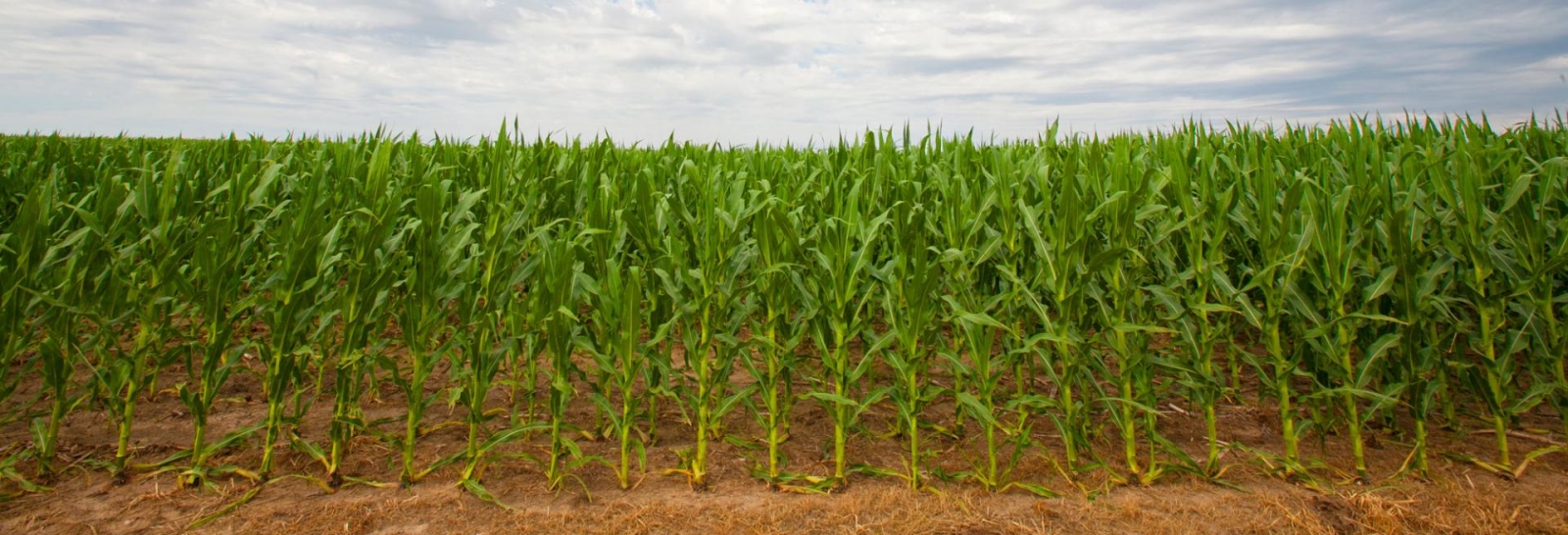Cover Crop Termination
Cover crops can be grown for many purposes, including reducing soil and wind erosion, weed suppression, nitrogen benefits and soil health improvement. For some growers, cover crops may be grazed, bailed or harvested as silage. Others intending to grow a cash crop following cover crops grazing will need timely cover crops termination to prevent competition with the next cash crop. Termination choices may include selecting species that winter kill, chemical applications and/or tillage.
Cover crop species such as oats, sorghum-sudangrass, oilseed radishes, winter peas and turnips generally die naturally over the winter, with some exceptions. Many grass species like cereal ryegrass, winter barley, triticale and wheat can survive winter temperatures and provide soil protection and weed suppression into spring.
These species may require herbicides like glyphosate (Roundup®) combined with burndown 2,4-D, saflufenacil (Sharpen®) or dicamba herbicides to control winter annual weeds, clover and alfalfa. Chemicals like Surestart®, TripleFlex®, Hornet® or Stinger® are usually more effective on clover and alfalfa control. Burndown herbicides should not be spring-applied unless there are one to two days with temperatures over 50°F to assure good results.
Remember that there is a fine line regarding growing cover crops with late spring termination to attain higher biomass without reducing grain crop yields. Follow NRCS cover crop termination guidelines for non-irrigated fields. For central and western Nebraska crop insurance, cover crops must be terminated at least 15 days prior to planting. For eastern Nebraska, cover crops can be terminated at or before planting.
Non-selective Gramoxone (paraquat) and can be effective on controlling tall cereal rye
but is not consistently effective killing winter wheat. Glufosinate (Liberty®, Rely® or Noventa®) may also be alternatives during cooler springs. The key to successful herbicide termination is complete plant spray coverage. Tillage may speed up residue breakdown but may also negate some of the cover crops benefits.
More details regarding cover crops are available online on CropWatch.
Mid-winter Cornstalk Grazing
Here in mid-winter, cornstalks remain a great forage resource for livestock producers. So far, snowfall across most of Nebraska has been minimal. While cattle can graze with snow cover, remember that if an icy crust develops on the snow, this will limit grazing and supplemental feed may need to be provided.
Another important consideration is the stocking rate and how long they have been in a particular field. Nutritional value of cornstalk residue is greatest at the beginning of a grazing period and declines with time as the most nutritious plant parts are consumed. A general stalk grazing rule is about 30 cow days per 100 bushels of corn that the field produced.
Over the fall and winter, weathering can also play a role in reducing cornstalk quality. Rain or melting snow soaks into dry cornstalk residue and leaches out some of the soluble nutrients. Most serious is the loss of sugars and other energy-dense nutrients, which lowers the TDN or energy value of the stalks.
Another factor that affects cornstalk grazing is wind. We have had our share of excessively high winds, which easily blow corn leaves and husks off the field. This, of course, can impact the amount of feed, and after grain, those leaves and husks contain the highest nutritional quality.
Cornstalks are still a great and economical winter feed source. Just be sure to closely monitor cow and field conditions while adjusting your supplementation program accordingly.

